Biography
Nestor, the monk of the Kiev-Pechersk Monastery, is considered the author of the "Tale of Bygone Years" - a monument to the ancient Russian literature and Slavic culture. Thanks to this priceless work, the Aguiographer received the title "Father of Russian History." The Orthodox Church gave the monk to the honors, ranging him to the face of saints. On November 9, believers celebrate the Day of Memorial Nestor's Chronicler.Fate
Nestor Chronicler, as well as Nestor Pechersky, or Nestor Kiev (by the name of the monastery, in which he served), lived in times of which a little is known today. In historical reports, key information from the biography of Saint, but since the true monk avoids human glory, the authenticity of these information is ambiguous.
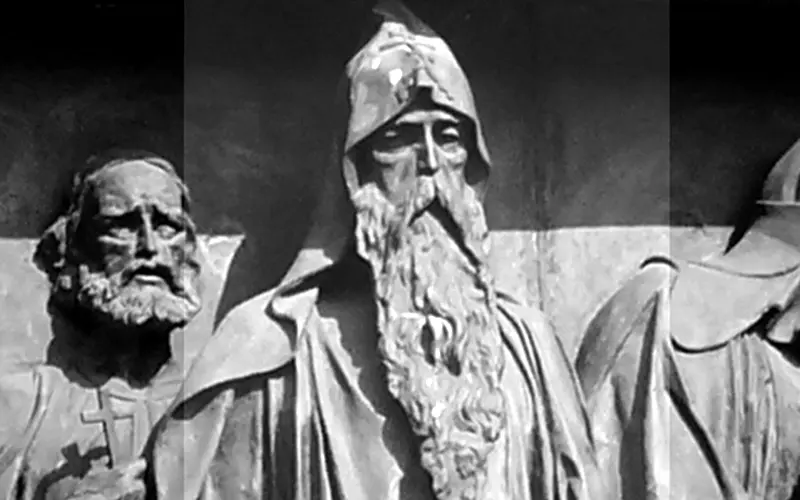
Historians suggest that Saint was born about 1056. The Life of Reverend Nestor Chronicler from the Collector "Kiev-Pechersky Catema" tells that he, being a 17-year-old young man, went to the walls of the monastery, when they were erected by Rev. Feodosius Pechersk. According to the canons of the church before taking a monasticism, it was necessary to undergo a test of a novice, which sometimes lasted dozens of years.
In 1074, Theodosius Pechersky died, the post of Hegumen accepted Stephen Blessed. Under it, Nestor has touched the monks. According to the chronicles, Stephen stayed at the head of the Kiev-Pechersk Monastery for 4 years, so San San Nestor accepted in the period until 1078.
It is possible that the saint was familiar with Feodosius: It was Nestor in 1091 that the blessing of St. John revealed the burial place of the mentor. In the "Tale of Bygone Years", these events are described. The author talks about himself in the first person, as about the "Laurent Inoka", but the name does not call. Nestor's name is first mentioned in the story about the transfer of the relics of Feodosia only in 1462.
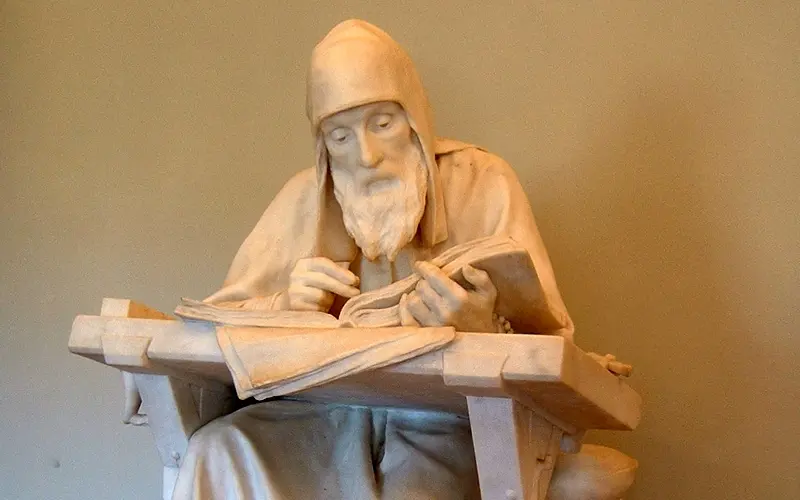
If Nestor and was familiar with the Feodosius, then it was rare personally to communicate, if it was generally possible. At the end of the "Life of Feodosia Pechersk", the author of which is definite, is Nestor, it is indicated:
"Everything that was stated above about our Blessed Feodosia, asking, I learned from the elderly fathers who have grown up."Life in the Kiev-Pechersk Monastery was based on strict abstinence: obedient food was relying - bread with water, some voluntarily starved, time was spent in many hours of prayers and thoughts about good. The personal life of Nestor was dedicated to the history of ancient Russia. The first annulary Aguiographer began writing around 1095 at John John.
The year of birth of Nestor is determined although approximately, but definitely. The opinions of historians about the date of death will differ significantly.
In 1113, Holy finished work on the first editorial board "Tale of Bygone Years." Since then, the chronicles from under the pen of Nestor did not go out. According to one of the versions, the novice of the Kiev-Pechersk Monastery decided to focus on worship. In prayers and posts, a few more years have passed, and Nestor died in the first quarter of the XII century. Scientists who do not represent the saint in literary inaction testify that he died in 1114-1115.
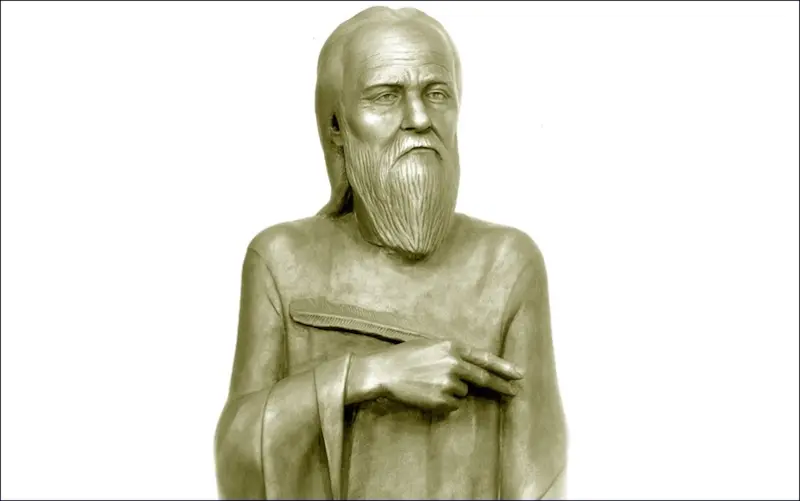
In the "Kiev-Pechersk Catema" does not contain information about the appearance of Nesor. However, the main forensic examination of Moscow Sergey Nikitin, known primarily by the plastic reconstruction of portraits according to the skull method by Mikhail Gerasimov, was able to recreate the saint's face. He belongs to the most famous sculpture of Nestor.
Sergey Nikitina was lucky enough not only to see, but also to study the power of Nesor. By the size of the skull, the specialist determined that the growth of the reverend was not higher than 160 cm. A sharply expressed right-sided symmetry of the bone frame of the head indicates that Nestor is right-hander, and the density system indicates that the monk died in deep old age - for 70 or even 80 years. The cause of death was not violent.
Chronicles
Nestor is attributed to the authorship of at least three works, the main thing from which is the "Tale of Bygone Years." In literary criticism, labor is also called the "original chronicle", since it is the earliest old-Russian archway, which have come to this year, or "Nestorova Chronicle".
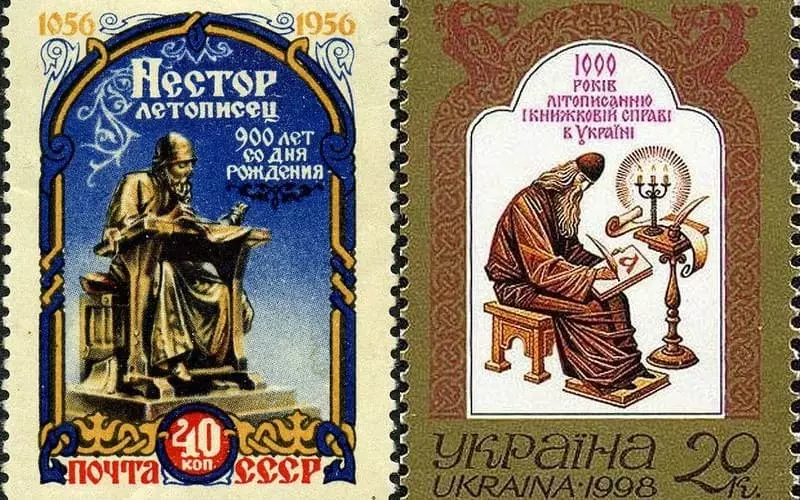
"Tale of the time years" is covered by a significant time interval - from biblical times to 1117. The chronicle was drawn up in 1110-1118 by several authors, if they take as a basis the version of the death of Nesor in 1115th, but the individuals of the rest are unknown. For the first time, the "Tale of Bygone Years" was signed by the name of Nestor in the Khlebnikov list of the middle of the XVI century.
The story begins with Nov, the three sons of which shared the Earth. Nestor explains where the people came from - Germans, Rus, Varyagi and how the ancient Russian cities arose.
The first date referred to in the "Tale of Bygone Years", becomes 852, when the Russian land appeared. The new geographic point is based on Rurik, Trourway and Sineus. Soon the full owner becomes Rurik. The brightest and memorable episode of the book, who is familiar with even a schoolboy, is the death of Oleg, the descendant of Rurik, from the bite of a snake, crane from the skull of the faithful race of the prince.
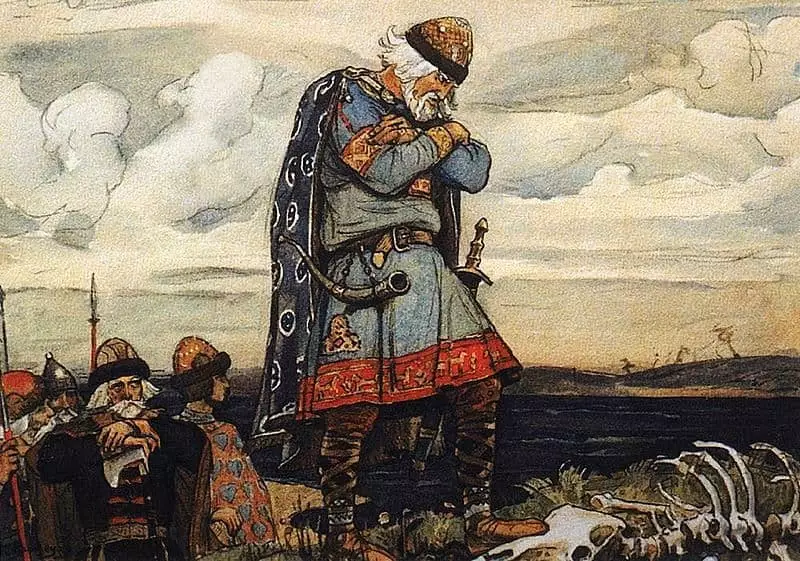
Next, Nestor briefly talks about the reign of Prince Igor, his wife Olga and Son Svyatoslav, about the exploits of Yaropolk and, finally, about the baptism of Russia in Vladimir in 988. The last prince mentioned in the "Tale of Bygone Years", Vladimir Monomakh becomes.
Nerontar, as a man Orthodox, it was important to tell about his faith, so the topic of Christianity takes place on the book of red thread: since the alluzies on the Bible and ending with the description of the divine events that accompany the Rus baptism process.
The monk writes that God consists of "three events": Father, Son and Holy Spirit, that he is in heaven surrounded by angels. He is opposed to demons who are not in hell, as it is considered today, but in the "abyss." The baptism of Russia Nestor describes as a way to save humanity from ignorance and temptation. Those who led the righteous lifestyle, worthy of place next to God in Heaven.
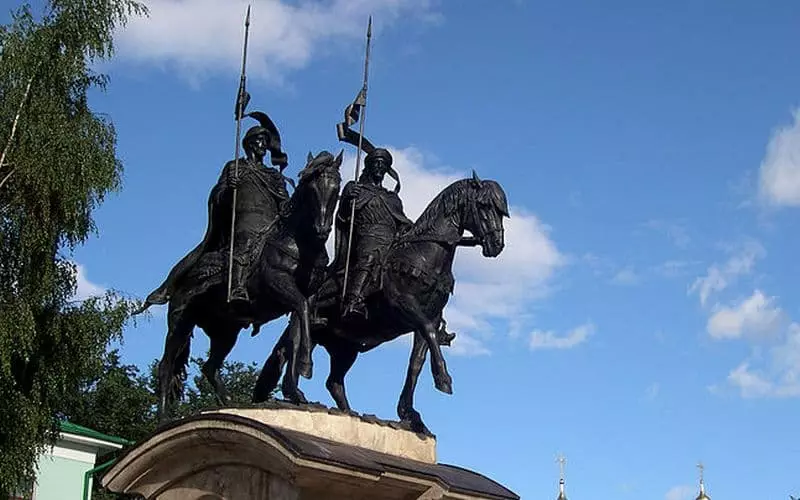
The second (but not in chronology) the chronicle, the authorship of which is attributed to Nermer, - "Reading about life and about the crevice of Blessed Strastierpsy Boris and Gleb", or "Life Boris and Gleb."
Boris and Gleb - the sons of Prince Vladimir, the embodiment of piety and humility, which dying from the hands of the saint brother Svyatopolk. The chronicle is written in Canon Life-Martyrie. For example, instead of defending against your destroyer, Boris and Gleb pray, wanting to make a martyr's death rather. Chronicle dates back to 1110 year.
The third work of Nestor, partially reached the present day, is "Life of the pretended Father of our Feodosia, Hegumen Pecherskago," or simply the "Life of Feodosia Pechersk". It was created no later than 1088. In the chronicle tells about the path of Feodosia from birth to the very death. A significant part is devoted to Igotum.
Memory
Nestor Chronicler canonized in the Russian Orthodox and Roman Catholic churches. Since the Slavs, his memory is celebrated on November 9, simultaneously on the day of Ukrainian writing and language. The relics of the saint rest in the caves of the Kiev-Pechersk Lavra.
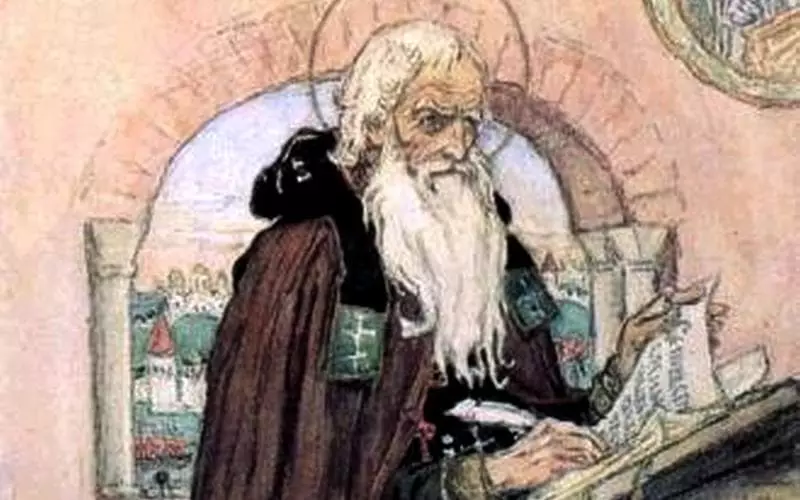
Nestor, as anyone, often portrayed on icons, but many of the works have lost the author. One of the most famous visual incarnations of Holy is the picture of Viktor Vasnetsova "Nestor-Chronicler", written in 1885-1893. The original is kept in the Tretyakov Gallery.
The monuments of Nestor's Chronicler are located in Kiev, Vladimir, Borispol. In the native monastery of the saint, two temple named after the pretended one was erected.
Chronicles
- 1088 - "Life of Rev. Father of our Feodosia, Heguman Pecherskago"
- 1110 - "Reading about life and about the crevice of Blessed Passion Startsu Boris and Gleb"
- 1110-1118 - "Tale of Bygone Years"
